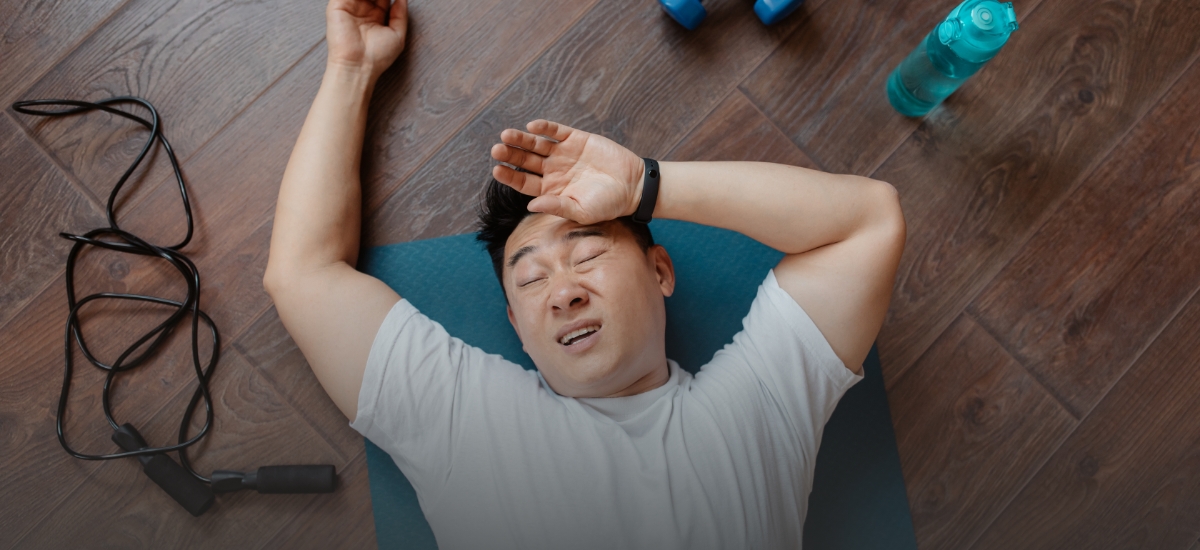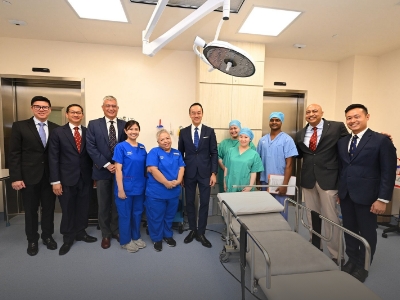Published on 14 November 2025
Nearly half of NUH sports injuries are linked to overtraining. An expert shares how to stay safe and train smart.
At a glance
- Nearly half of the sports injuries treated at NUH were linked to overexercising.
- Normal post-exercise soreness is a dull, general ache; overexercising pain is sharp or swollen and focused in one area.
- Ignoring such pain can lead to significant injury and long-term complications.
Singapore’s fitness boom is fuelling a silent epidemic: overexercising.
Between 2019 and 2021, nearly half of all sports injuries treated at the NUH Sports Centre were linked to overuse. The trend reflects how the nation’s growing enthusiasm for high-intensity workouts is starting to take a toll.
From Hyrox races to marathons and CrossFit challenges, extreme fitness has become a new badge of honour. But specialists warn that the “no pain, no gain” mindset can lead to burnout, long-term injury, and in rare cases, life-threatening complications.
“The rise in popularity and participation in high-intensity events contributes to a rise in overexertion-related injuries due to the intense physical demands, the competitive nature of the events, as well as the pressure on athletes to sustain their performance at peak levels,” said Dr Jade Chee, Associate Consultant, Division of Sports, Shoulder & Elbow Surgery, Department of Orthopaedic Surgery, NUH.
High-intensity workouts such as Hyrox, CrossFit, spin classes and high-intensity interval training (HIIT) can be particularly risky when performed too often or without proper rest.
“More individuals are pushing their bodies beyond their limits,” Dr Chee added.
“High-intensity events like Hyrox also involve transitions between different energy systems, including the anaerobic system, which, without adequate training and preparation, can lead to fatigue and increased risk of injury.”
How can you tell if you’re just sore or overdoing it?
If your pain feels sharper than usual, gets worse instead of better, or limits how much you can move, it’s best to rest. If it doesn’t improve, check in with a doctor.
When soreness turns dangerous
Those most at risk include elite athletes and beginners in endurance sports who ignore early warning signs, mistaking fatigue for weakness. People with eating disorders or muscle dysmorphia — an unhealthy obsession with body image — are also more prone to overexercising.
“Some individuals with inherited muscle diseases or metabolic disorders can be predisposed to rhabdomyolysis and should be advised when to seek prompt medical attention,” said Dr Chee.
Younger gym-goers are not immune either. “They may be more susceptible to exercise addiction because of the emphasis on body image and social media pressures,” she added.
How to tell if you’re overdoing itHere are some symptoms to watch out for:
|
Planning is key
Experts say the best way to prevent injury is through structured, progressive training.
Preparing for a marathon, for example, should take at least six months to a year of consistent running. Build up gradually until you can comfortably cover 15km to 20km a week before attempting longer distances.
For Hyrox, focus on consistent strength and endurance training. Practise squats, lunges and push-ups, and use kettlebells, sleds and rowing machines. Aim to run about 3km without stopping, while maintaining good form for movements like burpee broad jumps, lunges and sled pushes. Start with shorter distances or lighter weights, then increase intensity and volume as your fitness improves.
“Prioritise rest and recovery. Allow the body to heal. Focus on proper nutrition, hydration and mental wellbeing,” said Dr Chee. “It may also be useful to consult a coach or trainer to develop a safe and effective training plan.”
How to train smarterFrom too much to just right, here’s how to prevent overtraining:
|
In consultation with Dr Jade Chee, Associate Consultant, Division of Sports, Shoulder & Elbow Surgery, Department of Orthopaedic Surgery, NUH.




